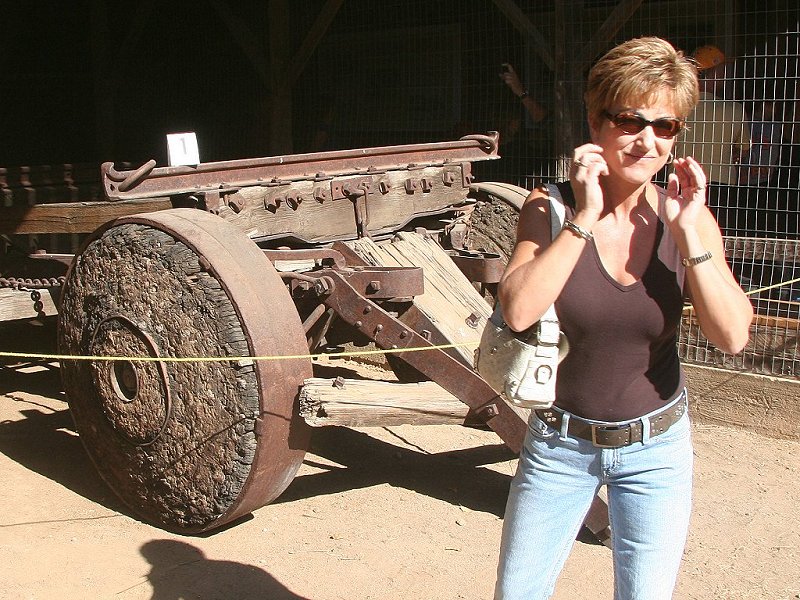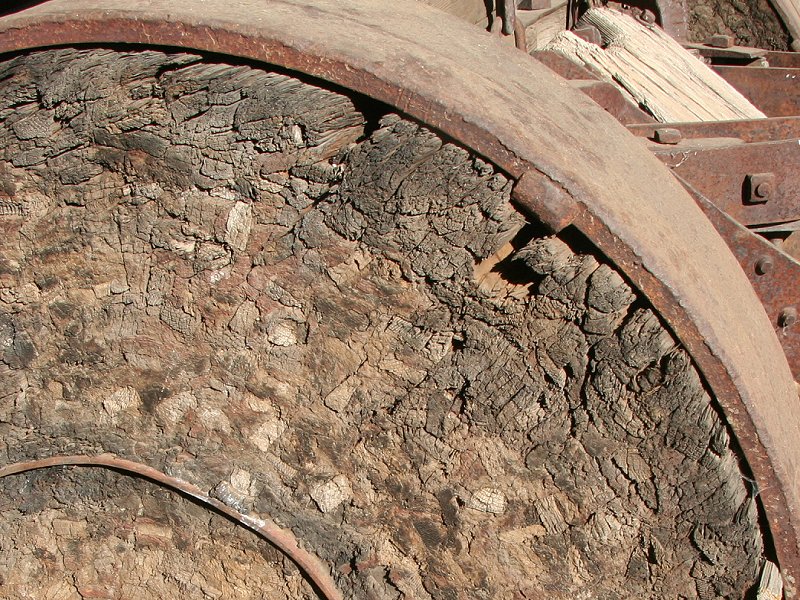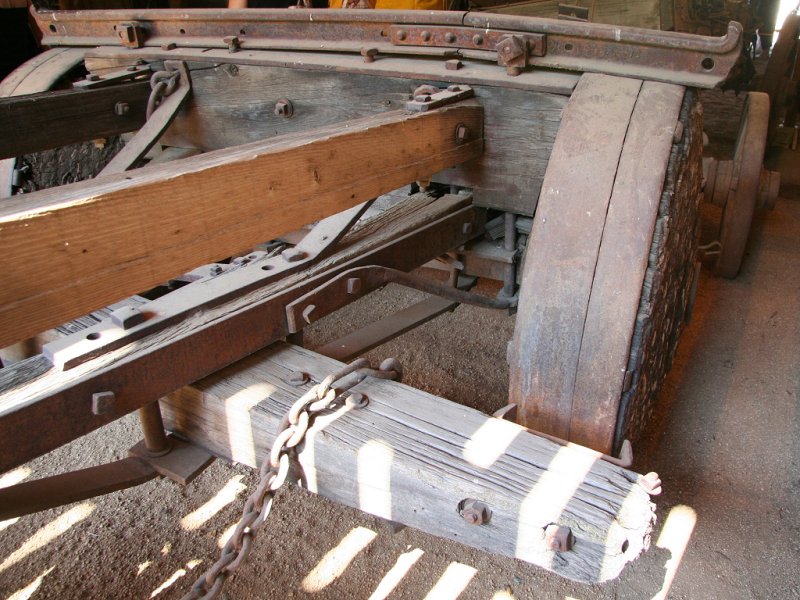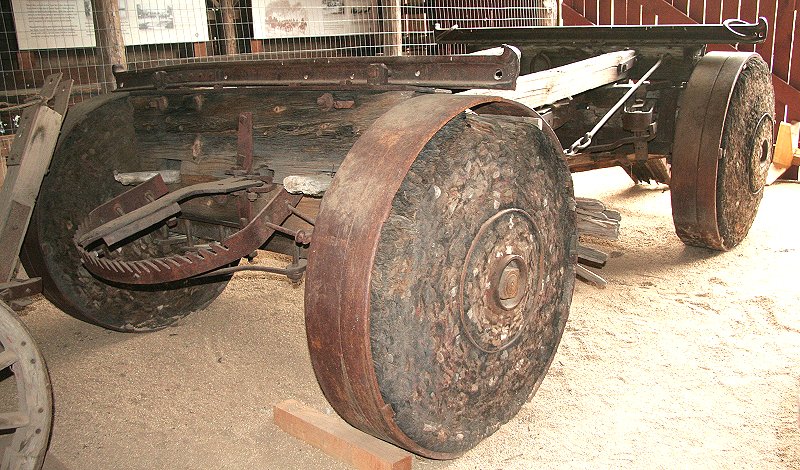|
Tongue, front wheels, and front cross beam of the Log Wagon. The wheels were made of a solid slice of log, which was turned in a lathe to give a round, smooth outer "rim" about half the width of the central bearing. A heavy steel band (tire) was pressed over the turned log slice. Stakes were pounded into the log slice to give a tight fit against the steel rim. |
 |


